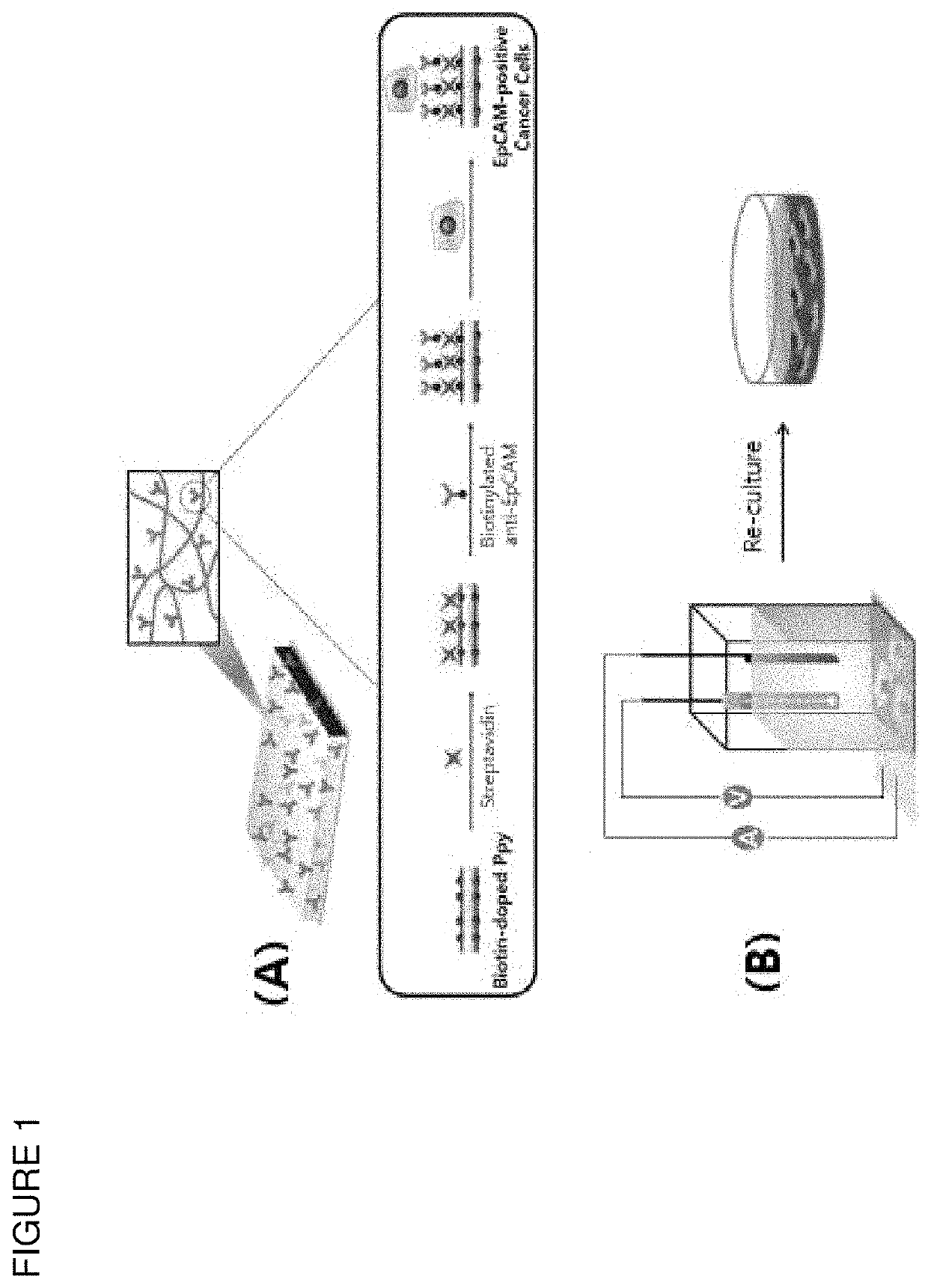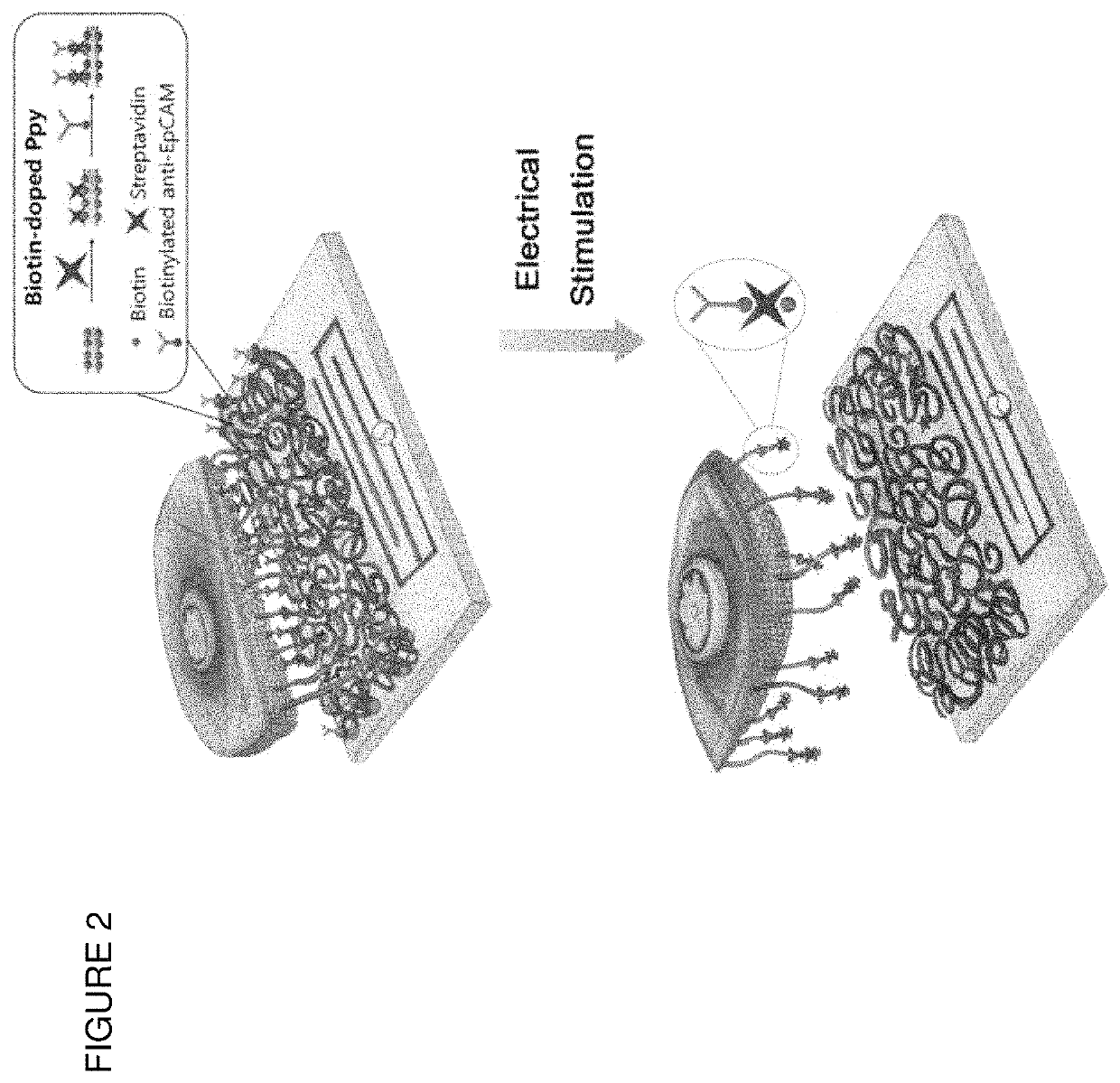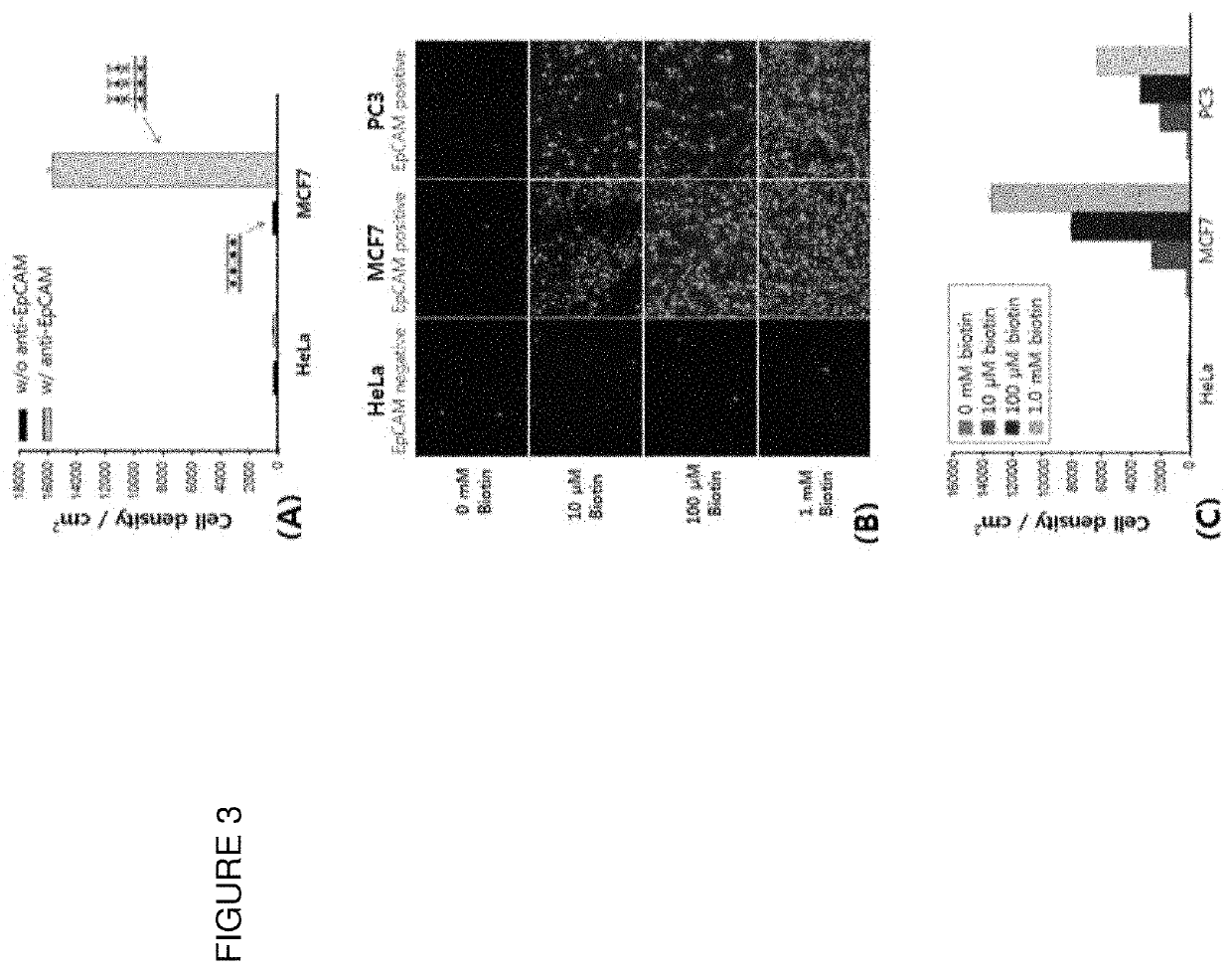Composition comprising of a conducting polymer for detecting, capturing, releasing, and collecting cell
a technology of conducting polymer and cell, applied in the field of composition comprising of conducting polymer for detecting, capturing, releasing, and collecting cell, can solve the problems of difficult detection and quantification, long time-consuming and laborious, and difficult detection of circulating tumor cells, etc., and achieve the feasibility of non-destructive release of captured cells and subsequent characterization of retrieval cells. the feasibility and other issues, to achieve the effect of reducing the number of cells, reducing the number o
- Summary
- Abstract
- Description
- Claims
- Application Information
AI Technical Summary
Benefits of technology
Problems solved by technology
Method used
Image
Examples
example 1
[0075]Biotin-Doped Polypyrrole (Ppy)
[0076]A Ppy film was prepared by using a 3-electrode system, and as a preparation apparatus, a potentiostat / galvanostat (BioLogic SP-150) was used. The apparatus was operated at room temperature, and a platinum wire was used as a counter electrode and Ag / AgCl was used as a reference electrode. A clean ITO (Indium Tin Oxide) was used as a working electrode for electropolymerization of polypyrrole.
[0077]Polymerization was carried out by using 0.1 M pyrrole and 0.01 M sodium dodecylbenzene sulfonate (NaDBS) aqueous solution containing various concentrations (1 mM, 0.1 mM, and 0.01 mM) of biotin using chronoamperometry (CA) at 0.8 V to 1.1 V (versus Ag / AgCl) for 2 seconds to 2 minutes. Thereafter, a biotin-doped Ppy film was deposited on a surface of the ITO and washed with ultrapure water 3 times and then dried.
example 2
[0078]Antibody-Doped Polypyrrole
[0079]In an example of the present invention, antibody-doped polypyrrole can be used as a label-free biosensor capable of directly capturing or analyzing a target protein or antigen without additional linker or marker.
[0080]The present inventors prepared a film by mixing an anti-PSA (anti-Prostate Specific antigen) into a pyrrole solution so as to be used to detect a biomaterial by directly doping the antibody into the conducting polymer, and carried out electropolymerization of polypyrrole on surfaces of gold nanowires (Au NWs) (refer to FIG. 9(A)).
[0081]After a surface of the polypyrrole was blocked by BSA, a label-free electrochemical immunosensor was used.
[0082]A thin gold (Au) film having a thickness of 150 nm was thermally evaporated to be deposited on one side surface of an AAO (Anodic Aluminum Oxide) template serving as a working electrode. For electrochemical deposition, the AAO film, on which the gold was deposited, was positioned on a surfa...
example 3
[0087]Nanowire-Shaped Conducting Polymer Film
[0088]A conducting polymer film of the present invention can be used in a three-dimensional detecting or collecting apparatus.
[0089]After a scaffold was manufactured in the form of a nanowire or a nanopillar by using ITO or gold, a structure as shown in FIG. 8 was prepared by using the scaffold as a working electrode. When the structure was used for detection, a surface area per volume was maximized, which made it possible to capture more target materials. In the case of a target material having a large volume, the structure could be firmer due to a fine absorption effect. Further, by repeatedly bonding linkers 30 times or more, a nanowire structure could be manufactured. When used together with the scaffold structure, a surface area could be maximized.
[0090]The present inventors coated the AAO (Anodic Aluminum Oxide) template with gold and mixed 0.1 M polypyrrole with 0.01 M PSS and 1 mM NHS-SS-biotin solution to perform coating at 0.7 t...
PUM
| Property | Measurement | Unit |
|---|---|---|
| thickness | aaaaa | aaaaa |
| electrical potential | aaaaa | aaaaa |
| total volume | aaaaa | aaaaa |
Abstract
Description
Claims
Application Information
 Login to View More
Login to View More - R&D
- Intellectual Property
- Life Sciences
- Materials
- Tech Scout
- Unparalleled Data Quality
- Higher Quality Content
- 60% Fewer Hallucinations
Browse by: Latest US Patents, China's latest patents, Technical Efficacy Thesaurus, Application Domain, Technology Topic, Popular Technical Reports.
© 2025 PatSnap. All rights reserved.Legal|Privacy policy|Modern Slavery Act Transparency Statement|Sitemap|About US| Contact US: help@patsnap.com



